News, updates and articles


Define Leadership is proud to sponsor Adam Hinshelwood.
Define Leadership is based in Worthing, West Sussex. As a company working with lots of local businesses, supporting them with leadership development and coaching we wanted to show our commitment to the town. We are proud to announce that we are sponsoring Worthing Football Club’s First Team Manager Adam Hinshelwood for the season. Adam has hit the ground running, winning 6 consecutive National League South matches since replacing Chris Agutter in October. He clearly embodies some great leadership qualities.
We’ll be keenly watching the team's progress throughout the season. Up the Rebels!
November 2025

Mastering the Art of Critical Decision Making:
A Strategic Approach
Highly qualified and motivated professionals
This week I’ll be returning to Hampshire Constabulary for the 9th time in around eighteen months to deliver another course for Detective Inspectors and Sergeants, providing training on the management of serious and complex crime. Their role carries a huge amount of responsibility and a relentless amount of decision making. Get a decision right and it’s a case of simply doing what is expected of them but get it wrong and the consequences are considerable – victims failed, offenders not brought to justice, serious crimes being overlooked and public confidence undermined. These officers do a fine job often, no make that usually, in challenging circumstances.
Understandably then, I spend a lot of time advocating how best to make decisions. I spent many years running investigations of my own and I am still required to make important decisions as Chair of the Sussex Child Death Overview Panel. I have come to understand that mastering critical decision-making entails not only a thorough analysis of available facts but also the embrace of innate intuition.
Decision making is essential in leadership, regardless of the nature of the business. I am convinced that in the labyrinth of life's choices, the interplay between instinct and information shapes the way forward. The Senior Investigating Officer’s Handbook contains the line “Instinctive thought processes can be your best friend or worst enemy”. This resonates with me because before rational thought processes start to form most people feel a degree of instinctiveness about lots of issues with which they are faced. It’s a skill to be able to get instinct and rational thought processes to work in tandem to give yourself the best possible opportunity to make sound decisions.
So something I’ll be saying a lot over the next two weeks is: “What do I know? What do I need to know? What will I do and how am I going to rationalise this?” To explain in more detail, here’s my three-step approach:
- Assess What You Know: Begin by considering your existing knowledge, embracing both the tangible data and the subtle whispers of intuition. Reflect on past experiences and gut feelings that have guided you. Acknowledge the insights that instinct provides but be mindful of potential for bias and ensure your thought process is complemented by factual information. This holistic assessment lays the groundwork for your decision, blending rational analysis with intuitive wisdom.
- Identify Knowledge Gaps: As you explore your decision it’s important to recognise the limits of your current understanding. Seek out additional information to complement both factual analysis and instinctual hunches. Embrace curiosity and intuition as guides to help uncover hidden truths and perspectives. This balanced pursuit of knowledge should provide more options in your decision-making toolkit and give a more comprehensive view of potential solutions.
- Craft a Sound Rationale: We’ve all probably been subject to scrutiny by hindsight. It’s important to reflect and learn but it can be frustrating to be held to account after an event by people in possession of information that wasn’t available at the time you made your decision. Accordingly, it’s essential for leaders to synthesise their insights into a coherent rationale that references both facts and intuition. There is a need to articulate the factors influencing your decision, weaving together a narrative that integrates rational analysis and intuitive guidance. Embrace the interplay between instinct and information, recognising that each brings valuable perspective to the table. Ground your decision in the present moment (what you know “at this time”), acknowledging that it is shaped by both tangible facts and subtle instincts.
I should make reference to the National Decision Model used within policing. It’s a brilliant and versatile decision-making process that transcends situations and roles. I used it a lot. In this article however I keen to discuss generic decision making in all areas of leadership and not exclusively in policing. I have found that integrating the 3-step approach outlined above enriches decision making. The interplay between instinct and information guides the strategic framework for making critical decisions. Considering your instincts can inform and enhance your rational deliberations.
Mastering critical decision-making requires a balanced integration of instinct and information. By assessing what you know, identifying knowledge gaps, and crafting a sound rationale that references both, you can manage the complexities of decision-making. Embracing the synergy between instinct and information should empower you to make sound choices and decisions that align with the reality of any given situation.
Richard Hamlin
26/02/2024

The ICO or the Coroner???
Strengthening Safety Nets:
The Crucial Role of Multi-agency Information Sharing
I run a lot of safeguarding related training. Something I am regularly asked about is the implications of sharing information and intelligence with partner agencies and the risks of falling foul of the requirements of the General Data Protection Regulations (GDPR). I have a stock answer…. “would you rather answer to the ICO for oversharing information or to the Coroner at an inquest where the failure to share information is a factor in a preventable death?”
Of course, securely managing and carefully sharing information is vitally important. Concerns around data privacy, confidentiality, and security must be carefully addressed through robust policies and protocols but GDPR, Data Protection Act 1998 and human rights legislation are not barriers to the justifiable sharing of information. They simply provide a framework to ensure that personal information about living individuals is shared appropriately.
Working Together to Safeguard Children is categoric on this subject:
“UK GDPR provides a number of bases for sharing personal information. It is not necessary to seek consent to share information for the purposes of safeguarding and promoting the welfare of a child provided that there is a lawful basis to process any personal information required.”
S.32 Working Together to Safeguard Children. Dec 2023 Ed
Working Together is a fantastic document providing guidance and the definitive requirements for most aspects of safeguarding. It takes a pragmatic and reasoned approach to information sharing:
“No single practitioner can have a full picture of a child’s needs and circumstances so effective sharing of information between practitioners, local organisations and agencies is essential for early identification of need, assessment, and service provision to keep children safe… practitioners should be proactive in sharing information as early as possible to help identify, assess, and respond to risks or concerns about the safety and welfare of children”
S.28 /29 Working Together to Safeguard Children. Dec 2023 Ed
It should be pretty clear…. but unfortunately, almost every review into the death of a child murdered by parents or carers in the UK has flagged issues with the sharing of key information between agencies. The 2022 national review into the murders of Arthur Labinjo-Hughes and Star Hobson identified “weaknesses in seeking, sharing and acting on information from multiple sources” while the recently published child safeguarding practice review into the death of Alfie Steele in Worcestershire in February 2021 recommended that “safeguarding partners should strengthen processes by which intelligence held on those involved in the lives of children and young people on child protection plans is shared and used to reduce risk.”
These are relatively recent cases, but the problem has been an issue for years and has been highlighted many times. The 2003 Victoria Climbé Report found “there is often confusion about what information can be shared between agencies, and about compliance with human rights legislation, data protection regulations and Caldicott guidelines on patient confidentiality.” Prior to Climbé other child murders that touched the national consciousness cited similar issues. In 1944 12-year-old Dennis O’Neill was killed by his foster father in Newport and the subsequent inquiry reported a “lamentable failure of communication” between agencies.
Why is this? The guidance and learning available within child safeguarding clearly states that the early sharing of information between agencies is paramount to the protection of vulnerable children (and indeed any vulnerable person). From at-risk children to marginalised adults, safeguarding requires a concerted effort from all public sector agencies. The effectiveness of that effort hinges on the seamless sharing of information between agencies.
It is essential that we develop working relationships to ensure that multi-agency information sharing becomes a fundamental necessity in safeguarding rather than merely a convenience. Here are five key reasons why it is so important:
1. **Holistic Understanding**: Each public sector agency usually possesses a unique piece of the puzzle when it comes to identifying and addressing the vulnerabilities of those under its care and supervision. By sharing information, agencies can create a comprehensive picture of an individual's circumstances, enabling more informed decision-making and tailored interventions.
2. **Early Intervention**: Timeliness is key in preventing harm to vulnerable individuals. When agencies share relevant information promptly, they can identify red flags and intervene early, before situations escalate. Whether it's detecting signs of abuse or physical and mental concerns, early intervention can make a world of difference in safeguarding those in need.
3. **Efficient Resource Allocation**: Limited resources are a reality for public sector agencies. By sharing information, agencies can avoid duplication of efforts and ensure resources are allocated where they are most needed. This efficiency not only maximises the impact of interventions but also fosters a culture of collaboration and accountability among agencies.
4. **Breaking Down Silos**: As shown, historically, siloed approaches within the public sector have hindered effective communication and collaboration. Multi-agency information sharing serves as a catalyst for breaking down these silos, fostering a culture of cooperation and shared responsibility. By working together, agencies can leverage their respective strengths to provide comprehensive support to vulnerable individuals and communities.
5. **Empowering Individuals**: At the heart of multi-agency information sharing is a commitment to empowering individuals to access the support they need. By streamlining processes and ensuring seamless communication between agencies, vulnerable children and individuals are more likely to receive timely and tailored assistance, ultimately helping them overcome challenges and improve their quality of life.
The importance of information sharing between agencies in safeguarding cannot be overstated. It is not merely a matter of convenience or efficiency; it is a moral imperative and a cornerstone of effective public service delivery. Report after report has highlighted this issue but the message still doesn’t seem to have hit home; we continue to see news reports carrying images of elfin faced children that have been subjected to awful abuse, neglect and sometimes murder by those with a caring responsibility for them.
It has to stop. We must embrace collaboration, break down silos, and prioritise the needs of vulnerable children. In doing so, public sector agencies can truly make a difference by creating safer, more supportive communities for all.
As a postscript, I must add that I really don’t want to demonise the ICO through the working title of this article which I used for dramatic effect. During all my years of working in this field, I have never heard of any instance where the ICO has sanctioned an agency in relation to the sharing of information in a safeguarding matter.
Richard Hamlin
31/01/2024
Richard Hamlin becomes an Associate of EA Inclusion
In addition to Define Leadership’s own streams of work, I'm delighted to have become an Associate of EA Inclusion, a company with a track record of effecting cultural change and advocating inclusion and diversity. I will be providing executive coaching and mentoring for companies through my contract with EA.
EA Inclusion delivers impactful learning and development programmes, proven to deliver culture change and embed inclusion. These are tailored to suit each organisation's specific requirements and align with its business strategy in order to achieve maximum effectiveness. I’m looking forward to helping EA Inclusion with the delivery of some exciting programmes of work.
03/01/2024
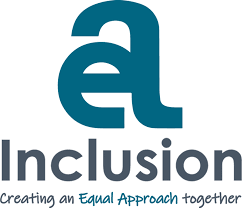
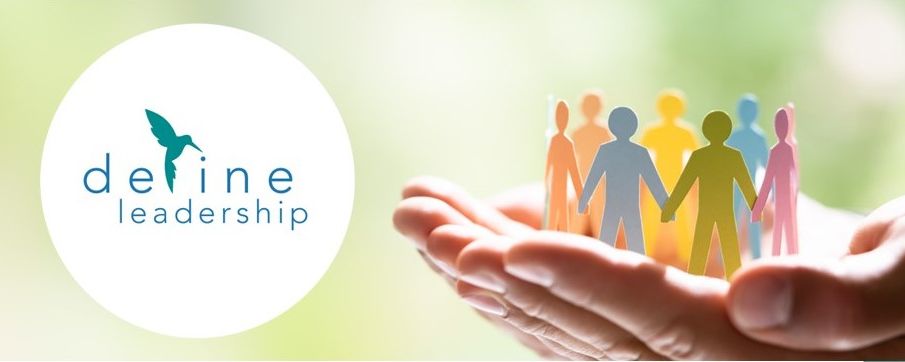
The Power of Empathetic Leadership:
Inspiring Trust and Building Effective, Resilient Teams
In a recent poll on Linked In I asked what is the single most important attribute of a good leader? 53% of respondents selected the option “Fair, Empathetic and Supportive”.
“Leadership should be born out of understanding the needs of those who would be affected by it”. These are the words of African America classical singer Marian Anderson (1897-1993) who resisted severe racial discrimination to become a celebrated contralto in the post WWII US, eventually being designated a delegate to the United Nations in 1958. I love this quote; she absolutely nailed it!
Leadership is not merely about giving directions, making decisions, or managing tasks. Leadership transcends these roles; it is about connecting with and empowering individuals to nurture their best potential. I have no doubt that one of the most profound qualities a leader can possess is empathy. Those that have it really can impact teams and organisations in a positive way.
Empathetic leadership is rooted in the ability to understand, relate to, and genuinely care about the experiences, emotions, and needs of team members. It involves actively listening, showing compassion, and putting yourself in their shoes. Empathetic leaders create an environment where employees feel valued, heard, and motivated to achieve to the best of their ability. I’ve written before about the work of Daniel Goleman in relation to emotional self-awareness and empathy. He believes that leaders with high levels social awareness are attuned to the emotions and needs of their teams and are skilled at reading social cues, allowing them to them to respond to given situations appropriately and with empathy. For Goleman the empathetic leadership is an effective leader, able to empathise with their team and be well equipped to build strong relationships, inspire trust, and create a positive work environment. A resultant outcome of this is higher employee engagement and better organisational performance.
By taking the time to listen and understand the concerns and challenges of team members, leaders can build trust and rapport. When employees feel that their leaders genuinely care about their well-being, they become more committed, engaged, and loyal. When leaders acknowledge and validate the emotions of their team, they create a positive work atmosphere. Empathetic leadership is therefore pivotal in boosting team morale. In working environments when leaders show understanding and consideration of their workforce, employees are more likely to collaborate effectively, support one another, and maintain a higher level of enthusiasm for their work.
Goleman advocates an empathetic approach to in decision-making. He suggests that leaders able to consider the emotional impact of their decisions on their teams are more likely to make choices that are beneficial both for those teams and the organisation. From a personal perspective I try, where possible, to be democratic in my approach to leadership. Most employees want to engage with managers about decisions that affect them. There are exceptions of course, but more often than not by taking the time to understand the perspectives of different team members, I find I am able to gain a more comprehensive view of a situation. I believe this, in turn, enables me to make better-informed decisions that consider the well-being and concerns of all involved. I must be clear – I am not advocating myself as a shining example of empathetic leadership here. Nonetheless as I’ve progressed through my working life leading teams, I’ve reflected on the best ways to work with them to deliver the best possible outcomes. Leaders, like everyone, can grow and evolve. Goleman is clear that levels of emotional intelligence can be developed. I’d like to think that I’m a better leader now than I was in 2000 when I took my first step into management.
By actively seeking input from team members and creating a safe space for them to express their ideas, leaders can inspire creativity and encourage innovation. An environment where employees feel heard and valued is a great breeding ground for new ideas and problem solving. Similarly canvassing the views of the team can build resilience within organisations. When leaders are able to understand the struggles and challenges faced by their teams, they can provide the necessary support and encouragement to help them overcome obstacles. Not all employees feel confident enough to knock on the chief exec’s door but if the latter takes the time to enter the workplace and speak with their teams directly, they’ll find they get a much better handle on what’s occurring in the organisation, both good and bad.
Today’s job market is highly competitive. It vitally important to attract and retain talent. Workers cite many reasons for choosing the companies they work for, including pay and benefits, career progression and job security. A high number also reference company culture where they feel respected, valued, and able to thrive and where they are supported by effective and ethical leaders. People are drawn to workplaces where they know their leaders care about their well-being, growth, and development. Moreover, they are more likely to stay with organisations that prioritise their emotional and professional needs.
It really wasn’t a surprise that over half of the votes cast in my poll endorsed empathic leadership. When used with sincerity it can be a transformative force that drives organisational success. By nurturing relationships, boosting morale, enhancing problem-solving, promoting employee well-being, encouraging innovation, building resilience, and attracting top talent, empathetic leaders create a dynamic, supportive, and highly productive work environment. Empathy is the cornerstone of effective, compassionate, and impactful leadership.
Richard Hamlin 28/10/2023
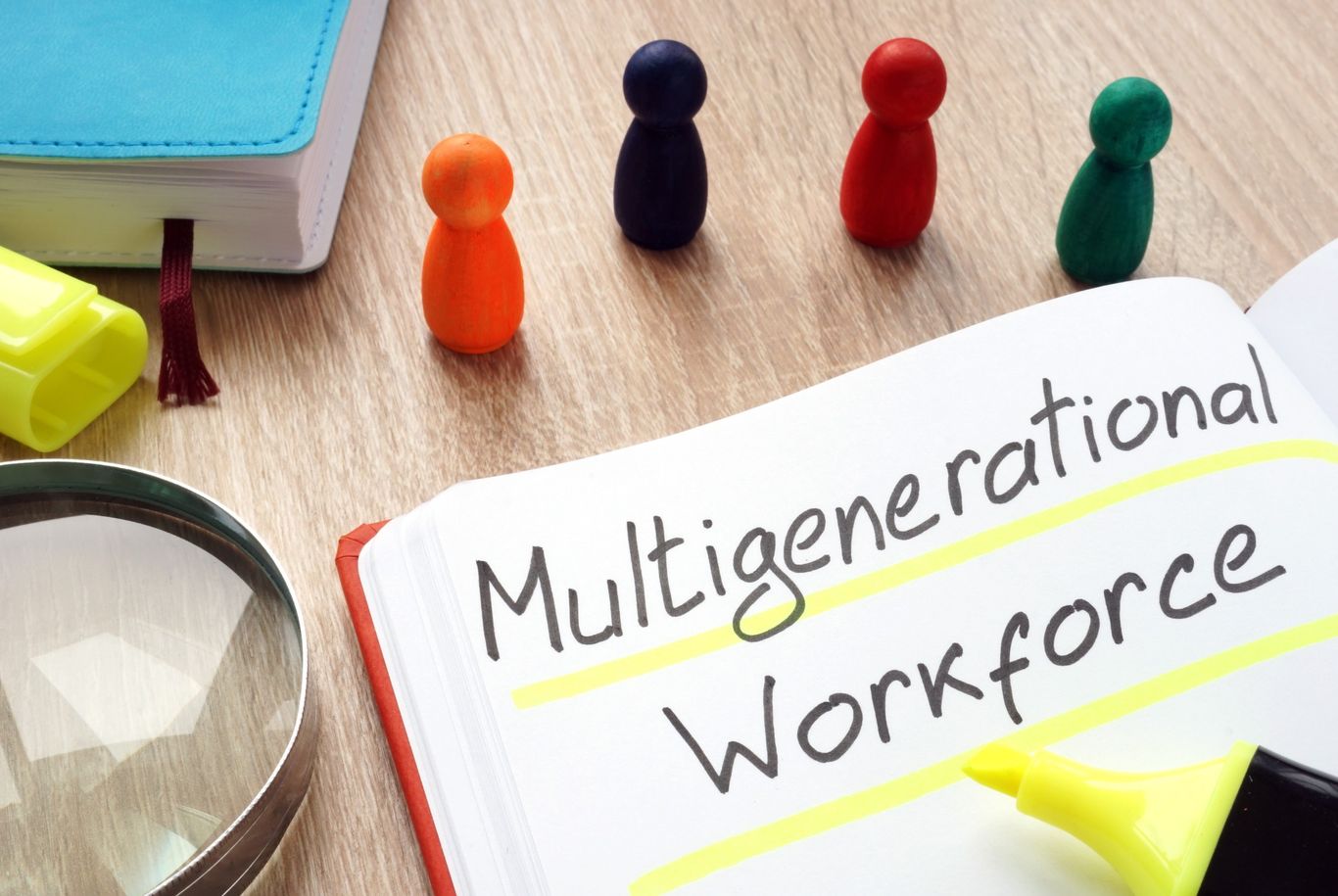
Good Leaders Have the Ability to Harness the Power of Multigenerational Teams
The modern workplace is possibly as dynamic and diverse as it’s ever been. One of the most significant developments in recent years is the rise of multigenerational teams. Many teams comprise individuals from different age groups, spanning from Baby Boomers to Generation Z. While managing such a diverse group may pose challenges, forward-thinking leaders will recognise the immense benefits that come with embracing generational diversity. Having the benefit of a multigenerational workforce allows a leader to maximise opportunities to tap into a wealth of knowledge, skills, and perspectives that span across the generations within the workplace.
A Wealth of Experience and Expertise
One of the most compelling advantages of having a multigenerational team is the varied levels of experience and expertise that each generation brings to the table. Baby Boomers and Gen Xers often boast decades of industry knowledge, while Millennials and Gen Z offer fresh perspectives and tech-savvy skills. By harnessing this collective wisdom, leaders can foster an environment of continuous learning, where each generation learns from one another.
Something that we encourage on the leadership courses that we run at Define Leadership is the benefit of cross-generational mentoring programs that facilitate the transfer of knowledge between generations. These not only enhance the skills of the younger workforce but also foster a sense of value and purpose among the more experienced team members.
Innovative Thinking and Creativity:
Multigenerational teams inherently bring diverse viewpoints and approaches to problem-solving. Baby Boomers may rely on their tried-and-true methods, while Gen Z may embrace cutting-edge technologies and digital tools. When these different approaches intersect, they can spark innovative solutions that may not have been readily available within a homogenous team.
Good leaders will engender a culture of collaboration and open communication where team members feel comfortable sharing their unique ideas and perspectives. The opportunity for teams to have time in their schedules to meet and build rapport is so vital in the workplace. We’re all busy and I’ve heard managers say, they just don’t have time to facilitate regular team meetings. This is a missed opportunity. There’s huge value for teams to be able to meet, chat and chew the fat over the issues they are facing.
Team meetings where there is representation from all generations in the workforce can create fantastic creative synergy and often solve problems that have been holding back organisational progress.
Enhanced Adaptability and Resilience:
In today’s rapidly changing world and challenging world, adaptability is a crucial skill. Multigenerational teams often excel in this area, as each generation has weathered its own set of economic, technological, and societal shifts. Older generations tend to offer stability and resilience, while the younger ones bring agility and adaptability. Together, they create a well-rounded team capable of navigating uncertainty.
The best leaders strive to recognise and celebrate the strengths of each generation when it comes to adaptability. They encourage cross-training and skill-sharing to ensure that all team members are well-equipped to handle change.
Improved Employee Engagement and Retention:
Employees that feel heard, valued, and understood are more likely to be engaged and committed to their work. You’ll find countless research papers stating that only around 15% of employees feel actively engaged in the workplace. It’s therefore incumbent on leaders to make every effort to boost morale and job satisfaction. Utilising the benefits of a multigenerational team that embraces diversity can help achieve this, leading to higher retention rates and reduced turnover costs.
Opportunities to develop generational affinity are something that leaders need to identify and implement at work. Regular team-building activities that encourage bonding among team members of all ages can foster a sense of belonging and camaraderie.
Expanded Market Perspectives:
With a diverse team, leaders gain access to a wider range of market insights and perspectives. Different generations often have varying consumer preferences, attitudes and behaviours. The ability to tap into these insights enables leaders to make more informed decisions and tailor their organisational strategies to reach a broader audience.
A benefit of having a multigenerational team is that you have ready access to guidance on societal attitudes. Encouraging open discussions about consumer behaviours and opinions within teams can reveal illuminating results. Accordingly, leaders should seek to involve team members from a wide generational range in discussions about how best to promote the organisation – whether your business is selling commercial products or services or providing a service within the public sector where the maintenance of community confidence and satisfaction is essential. Leveraging generational insights can be invaluable.
Leading a multigenerational team is not without its challenges, but the benefits far outweigh the drawbacks. By recognising the wealth of knowledge, skills, and perspectives that span across generations in the workplace, leaders have the ability to harness the full potential of their teams. By promoting collaboration, inclusivity, and open communication, leaders can create an environment where generational diversity is a powerful asset that drives innovation, adaptability, and success in the modern workplace.
Embracing the opportunities offered by the multigenerational team in your organisation will be hugely advantageous.
Richard Hamlin. 7/10/2023
Good leaders have always had emotional intelligence. They just didn’t know it.
During my service I was fortunate to work with some of the most senior police leaders of the last generation. So, cards on the table, I have to admit to enjoying a spot of people watching and am also quite partial to studying a bit of psychoanalytic theory too. Some of the roles I’ve undertaken have afforded me the privilege of observing a wide range of leadership styles in action. Leaders in all areas of life – business, sport, community and education to mention just a few – can be very different in their make-up, utilising a wide variety of managerial techniques yet, ultimately, with the same overall aim of delivering successful results.
There is however one facet of leadership that is increasingly considered to be a necessary part of every leader’s skillset. As someone directly involved in developmental training for managers and supervisors, rarely a day goes by without someone advocating emotional intelligence as the answer to motivating and leading successful teams. So, is Emotional Intelligence (EQ) simply just the latest en vogue topic of leadership theorists or is it an underlying trait that all good leaders require?
Emotional intelligence is a subject that I find absorbing, because not only is my line of work to help people develop their leadership skills but also because I’ve worked with people who have it in spades and also, just occasionally, with some who appear to be completely devoid of it. It intrigues me. That said, in all honesty, whilst the term itself as a concept is relatively new, the idea of being able to effectively manage one’s emotions and be deferential to the emotions of others in order to interact positively with them, really isn’t. The term Emotional Intelligence was coined by American scholars of psychology Peter Salovey and John D. Mayer in 1990 and developed by Daniel Goleman in his 1995 book ‘Emotional Intelligence (Why it can matter more than IQ)’. Salovey and Mayer described EQ as “a form of social intelligence, the ability to monitor one’s own and others’ feelings and emotions, to discriminate among them and use this information to guide one’s thinking and action”.
Goleman, especially, remains at the fore of current thinking on emotional intelligence but as you’d expect of such a theory, it’s been expanded and various derivative models have been put forward by other academics. Don’t worry, this article isn’t going to compare and contrast different EQ models (although that might be a nifty way to measure your own levels of emotional self-control). I’m simply going to highlight how EQ is a fundamental requirement for an effective leader and how, in fact, emotional intelligence has been a composite part of leadership for a very long time.
The Goleman model advocates that an individual needs to understand and manage their emotions along with any impulses that arise from them. Equally it is important to recognise that other people are also prone to emotional drives and so it is necessary to become adept at empathising with their positions in order to find the common ground upon which to build a platform from which progress can be made.
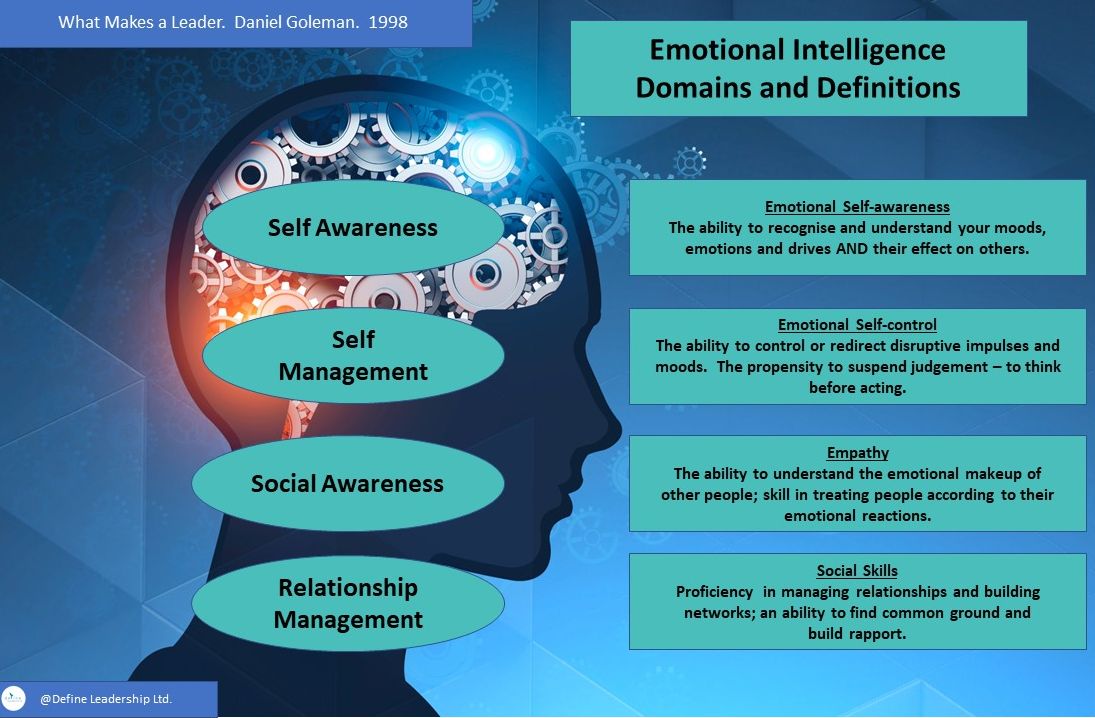
Goleman wraps the requirement for a leader to be fully motivated around his model of EQ. He explains the need to be resolute in the face of setbacks and have the strength to remain committed to your cause. By being self-motivated themselves, leaders will in turn inspire their teams to be motivated and committed to achieving the best possible outcomes.
The Goleman model of managed human interaction and how carefully controlled emotions can be beneficial to leadership models is something I’m a big fan of. That said, as I’ve already stated, the management of human emotion being key to cultivating positive relationships isn’t new. It’s central to a number of psychoanalytical theories. In the 1950s Eric Berne developed transactional analysis, advocating how interactions between individuals can be improved by being able to recognise uncomplimentary ego states that create disharmony in relationships.
More recently Professor Steve Peters developed his mind management model and sold bucket loads of copies of ‘The Chimp Paradox’ in which he differentiates between emotional thinking and acting on feelings and impressions (our inner chimp) and logical thinking (the real person) which focuses on truth and fact. Chapter 7 is entitled ‘The Planet of Others’ and discusses how we relate to people: “It is up to you whether you want to try understand others but it would ultimately be to your advantage to do so… very simply speaking, you need to discover who the person is in front of you”. There’s a lot in common here with Goleman’s social awareness element of emotional intelligence.
Please don’t for a moment think I’m being critical of Professor Peters. The Chimp Paradox is a great read and I’m lucky enough to have seen him speak in person. I’d fully recommend that you do too, if ever you get the opportunity to do so. My point is that much psychoanalytical thinking on building strong successful relationships, focuses on the need to recognise and manage your own emotions and be fully aware of those within the people with whom you are interacting. Now all these great minds can’t be wrong, right?
In policing, one of the most taught behavioural models is The Betari Box. Betari effectively purports that our attitudes have a direct affect on our behaviour which in turn affects the attitude and ultimately the behaviour of the people with whom we are interacting.
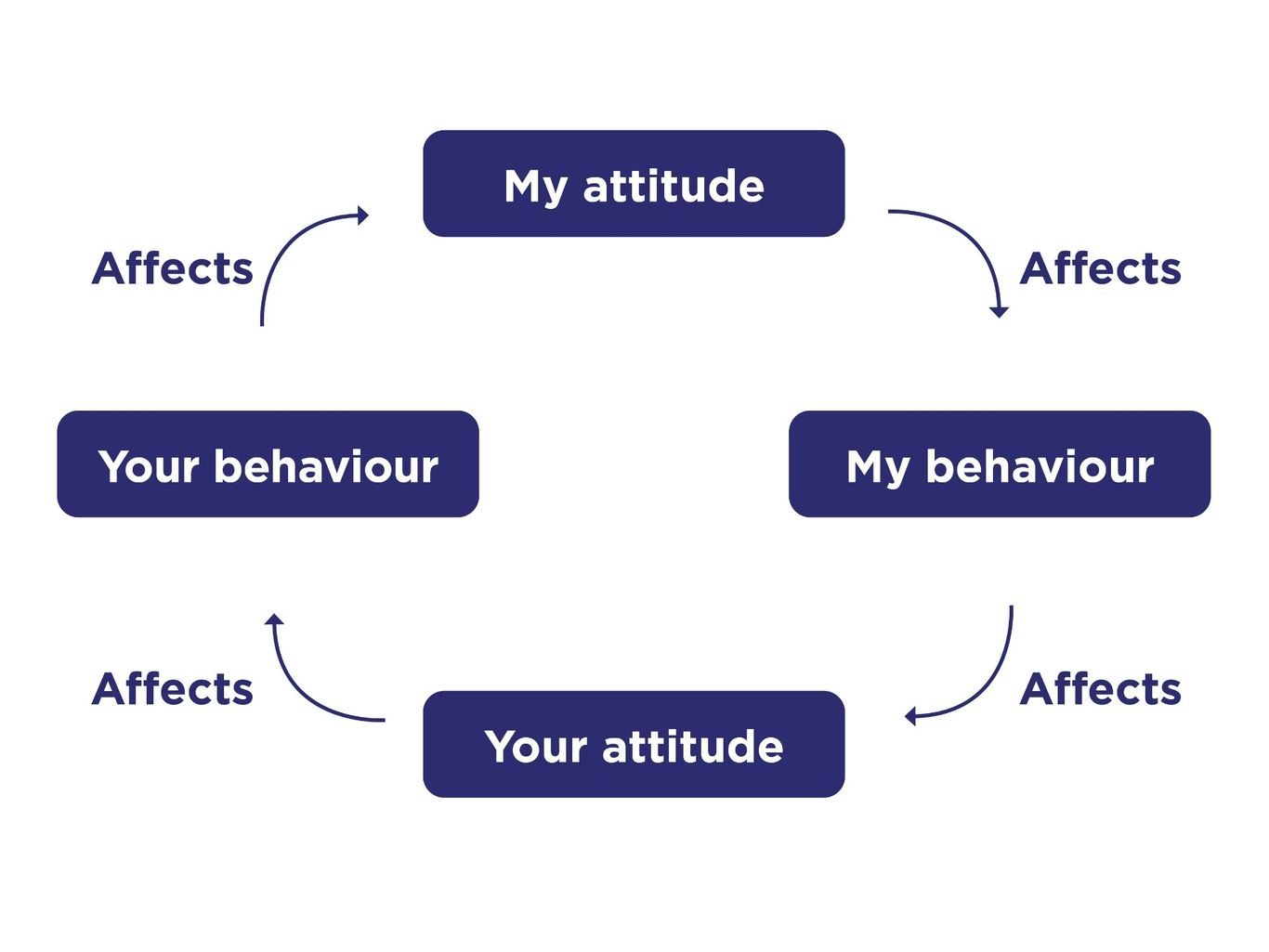
I’ve seen this at first hand myself. Most cops have and in many different types of situations, including when dealing with conflict. Accordingly, the College of Policing advocates Betari and stresses the importance of officers being emotionally aware and able to self-regulate as part of the conflict management model.
The Betari Box is as old as the hills; the origin of it is unknown. I rather like that, and it would be nice to think that some philosopher, in a year BC, inscribed it on a tablet. Regardless, its appeal is its simplicity and the understanding that we can affect positive outcomes by keeping our emotions in check when dealing with others.
Ask any group of people to name the key qualities of a good leader and I’ll guarantee that high on the list of responses is the requirement to be considerate of the needs of the team; to manage others with empathy and understanding. I’m pretty sure that you’d have got a similar response if you’d posed the same question fifty years ago. The difference is that today someone may well suggest emotional intelligence as a key quality of a good leader. The term made be relatively new and now at the fore of leadership training consciousness, but the behaviours it encompasses have always been an essential ingredient of a good leader. To nurture and motivate a successful team requires a leader to understand and respect the team’s needs and to recognise how their own behaviour impacts upon it.
